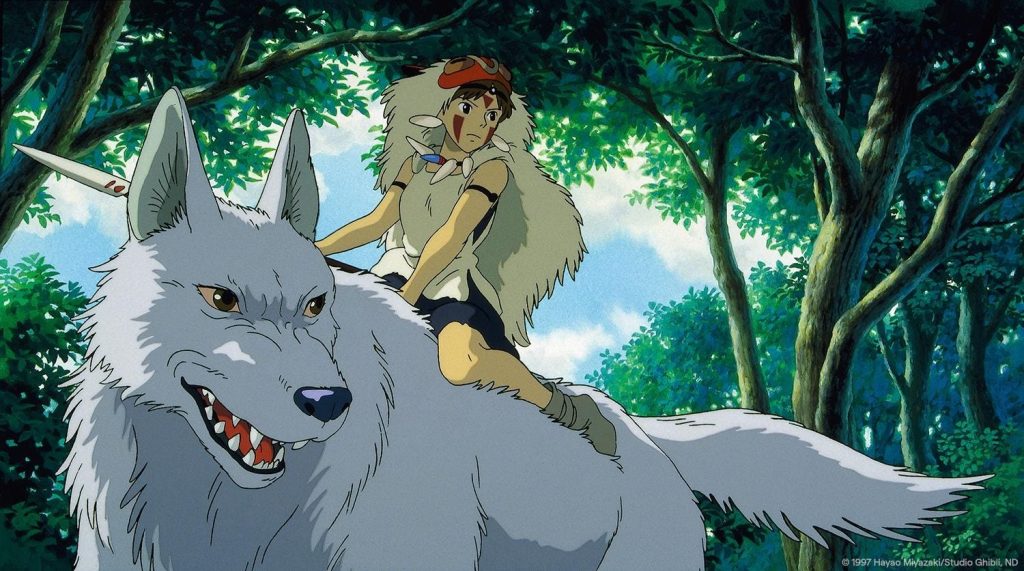Princess Mononoke
Studio Ghibli/GKids
Studio Ghibli’s legendary environmentalist epic Princess Mononoke (1997) has been re-released in Imax across North America, just as Studio Ghibli became the unwitting subject of an AI-generated trend.
The internet got pretty excited about ChatGPT again last week after the launch of OpenAI’s GPT-4o image generator led to a flood of images imitating the style of Studio Ghibli.
The images sparked anger from Studio Ghibli fans who viewed the trend as a bitter irony, going directly against the ethos of the animation studio and its co-founder Hayao Miyazaki.
In a now-iconic clip, Miyazaki condemns generative AI, denouncing the technology as “an insult to life itself.”
Miyazaki directed Princess Mononoke, and at the time, intended it to be his final film. Thankfully, it wasn’t.
Miyzaki has directed many masterpieces since, repeatedly delaying his retirement, seemingly driven by a compulsion to create art.
Miyzaki’s films show a great love of the natural world and empathy for humanity, with thoughtful depictions of surreal, war-torn worlds, inhabited by idealistic heroes and nuanced villains.
Princess Mononoke’s re-release in 4K (with no AI-upscaling) marks a fantastic opportunity to see what the Studio Ghibli craze is all about, and hopefully, provide some context on the controversy behind the AI-generated trend.
What Is ‘Princess Mononoke’ About?
Princess Mononoke is a fantasy film steeped in Japanese myth and history, similar to how The Lord of the Rings is rooted in European legend.
The story follows Ashitaka, a member of the Indigenous Emishi tribe, after he is inflicted with a cursed injury after defending his village from a demon.
This demon used to be a giant boar, but was driven mad after being shot with an iron bullet, a sign that civilization is irreversibly encroaching on the natural world.
A massive conflict grows between the wild inhabitants of the forest and humanity, and Ashitaka is tasked with curing his curse, while attempting to bring peace to the land.
The film is notable not just for its stunning landscapes and masterful animation, but its unique approach to a familiar story—we’ve all seen the struggle between the natural and artificial world play out in Avatar and other blockbusters, but Princess Mononoke does it differently.
Princess Mononoke
Studio Ghibli/GKids
The natural world in Princess Mononoke is as terrifying as it is beautiful. The film is an unsanitized depiction of nature, and the film implies that modern humans don’t really belong in the forest.
The human aggressors in Princess Mononoke are greedy and misguided, but are also capable of great empathy. At one point, it is revealed that the polluting, tree-felling Iron Town is inhabited by society’s outcasts, people who would not be able to survive in the uncompromising deathscape of the natural world.
Princess Mononoke does not propose that humanity return to the forest—it suggests that something about our relationship with nature has been lost, maybe forever.
However, the film concludes on a hopeful note, implying that there is a way for humans to live in greater balance with the natural world.
It’s definitely not an endorsement for a wasteful, energy intensive technology like generative AI.
‘Princess Mononoke’ Is An Ode Against Machine-Made Art
Princess Mononoke was released long before generative AI polluted the internet, but the film is a marvel to the art of animation, proof that generative AI cannot imitate great filmmaking and craftsmanship.
Imagery and animation created by generative AI models looks impressive at first glance, but it’s all created without intent, imbued with no perspective.
While generative AI threatens to erode the value of human labor by flooding the market with hastily created knock-offs, there is no substitute for real art, crafted with care and passion. Audiences know the difference.
Gkids, the North American distributor for Studio Ghibli films, released a statement to Variety celebrating the re-release of Princess Mononoke:
“In a time when technology tries to replicate humanity, we are thrilled that audiences value a theatrical experience that respects and celebrates Hayao Miyazaki and Studio Ghibli’s masterpiece in all its cinematic hand-drawn glory.”
MORE FROM FORBES

